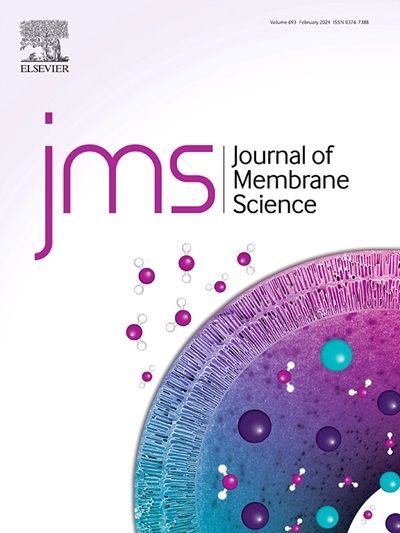The complex influence of membrane roughness on colloidal fouling: A dialectical perspective
IF 8.4
1区 工程技术
Q1 ENGINEERING, CHEMICAL
引用次数: 0
Abstract
Roughness is a key feature of membrane surface topography, yet its impact on fouling remains unclear. Herein, we present a coupled collision attachment-wettability framework to investigate the impact of membrane roughness on fouling from a dialectical perspective. Our findings show that for hydrophilic membranes, increasing surface roughness enhances the interfacial hydration repulsion barrier, reducing fouling. In contrast, for hydrophobic membranes, rougher surfaces lower the interfacial energy barrier, increasing fouling. The effect of roughness is also influenced by the membrane's intrinsic contact angle (θ0), initial water flux (J0), and solution ionic strength (Is). Membranes with lower θ0 maintain higher stable flux, even when smooth, while fouling resistance for higher θ0 membranes depends more on surface roughness. At lower J0 or Is, flux remains relatively stable with slight/mild reductions, due to reduced permeate drag or enhanced electrostatic repulsion. In contrast, severe fouling occurs under high J0 or Is, irrespective of surface roughness. Our simulations reveal the various mechanisms (i.e., hydration repulsion, permeate drag, and electrostatic interactions) that govern the role of surface roughness in fouling, providing valuable implications for membrane design, operational optimization, and feedwater pretreatment.

膜粗糙度对胶体堵塞的复杂影响:辩证的视角
本文章由计算机程序翻译,如有差异,请以英文原文为准。
求助全文
约1分钟内获得全文
求助全文
来源期刊

Journal of Membrane Science
工程技术-高分子科学
CiteScore
17.10
自引率
17.90%
发文量
1031
审稿时长
2.5 months
期刊介绍:
The Journal of Membrane Science is a publication that focuses on membrane systems and is aimed at academic and industrial chemists, chemical engineers, materials scientists, and membranologists. It publishes original research and reviews on various aspects of membrane transport, membrane formation/structure, fouling, module/process design, and processes/applications. The journal primarily focuses on the structure, function, and performance of non-biological membranes but also includes papers that relate to biological membranes. The Journal of Membrane Science publishes Full Text Papers, State-of-the-Art Reviews, Letters to the Editor, and Perspectives.
 求助内容:
求助内容: 应助结果提醒方式:
应助结果提醒方式:


